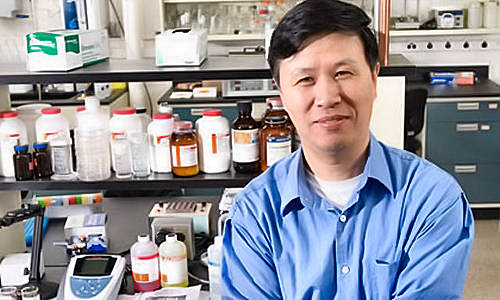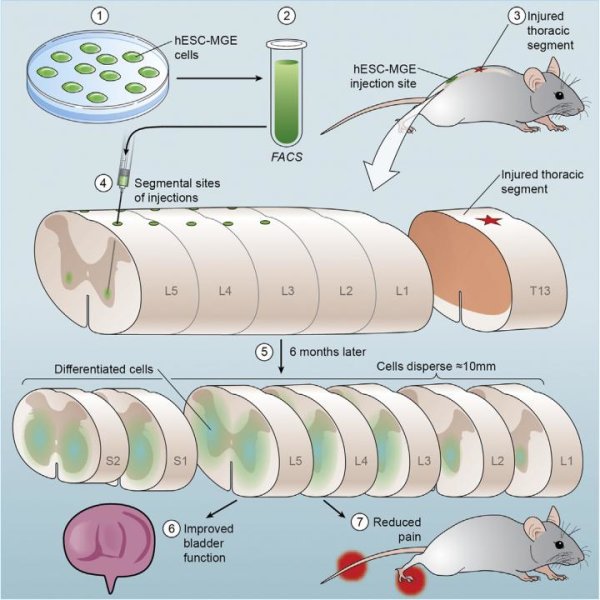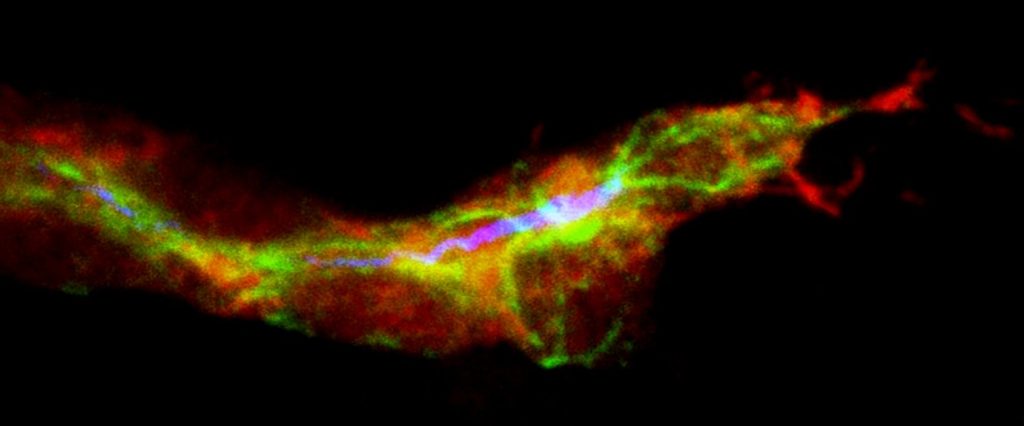The gap between stem cell research and regenerative medicine just became a lot narrower, thanks to a new technique that coaxes stem cells, with potential to become any tissue type, to take the first step to specialization. It is the first time this critical step has been demonstrated in a laboratory.
Professor Ning Wang led a team that found the precise combination of mechanical forces, chemistry and timing to help stem cells differentiate into three germ layers, the first step toward developing specialized tissues and organs.
University of Illinois researchers, in collaboration with scientists at Notre Dame University and the Huazhong University of Science and Technology in China, published their results in the journal Nature Communications.
“Everybody knows that for an embryo to form, somehow a single cell has a way to self-organize into multiple cells, but the in vivo microenvironment is not well understood,” said study leader Ning Wang, a professor of mechanical science and engineering at the U. of I. “We want to know how they develop into organized structures and organs. It doesn’t happen by random chance. There are biological rules that we don’t yet understand.”
During fetal development, all the specialized tissues and organs of the body form out of a small ball of stem cells. First, the ball of generalized cells separates into three different cell lines, called germ layers, which will become different systems of the body. This crucial first step has eluded researchers in the lab. No one has yet been able to induce the cells to form the three distinct germ layers, in the correct order – endoderm on the inside, mesoderm in the middle and ectoderm on the outside. This represents a major hurdle in the application of stem cells to regenerative medicine, since researchers need to understand how tissues develop before they can reliably recreate the process.
“It’s very hard to generate tissues or organs, and the reason is that we don’t know how they form in vivo,” Wang said. “The problem, fundamentally, is that the biological process is not clear. What is the biological environment that controls this, so they can become more organized and specialized?”
Wang’s team demonstrated that not only is it possible for mouse embryonic stem cells to form three distinct germ layers in the lab, but also that achieving the separation requires a careful combination of correct timing, chemical factors and mechanical environment. The team uses cell lines that fluoresce in different colors when they become part of a germ layer, which allows the researchers to monitor the process dynamically.
The researchers deposited the stem cells in a very soft gel matrix, attempting to recreate the properties of the womb. They found that several mechanical forces played a role in how the cells organized and differentiated – the stiffness of the gel, the forces each cell exerts on its neighbors, and the matrix of proteins that the cells themselves deposit as a scaffolding to give the developing embryo structure.
By adjusting the mechanical environment, the researchers were able to observe how the forces affected the developing cells, and found the particular combination that yielded the three germ layers. They also found that they could direct layer development by changing the mechanics, even creating an environment that caused the layers to form in reverse order.
Now, Wang’s group is working to improve their technique for greater efficiency. He hopes that other researchers will be able to use the technique to bridge the gap between stem cells and tissue engineering.
“It’s the first time we’ve had the correct three-germ-layer organization in mammalian cells,” Wang said. “The potential is huge. Now we can push it even further and generate specific organs and tissues. It opens the door for regenerative medicine.”
Story Source:
The above story is based on materials provided by University of Illinois at Urbana-Champaign, Liz Ahlberg.





